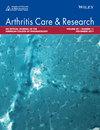Environmental hazards and heightened neighborhood social vulnerability coexist and disproportionately affect minoritized populations. We investigated associations between exposure to adverse environmental burden concentrated in areas with high social vulnerability and care fragmentation (missed appointments, emergency department visits, and hospitalizations) and social needs (eg, food and housing insecurity) among individuals with rheumatic conditions.
We identified adults receiving care in a Massachusetts multihospital system with at least two rheumatic disease codes and complete street addresses. Geocoded addresses were linked to the Centers for Disease Control and Prevention/Agency for Toxic Substances and Disease Registry Social–Environmental Ranking (SER), which combines census-tract social vulnerability variables (eg, socioeconomic status) with environmental hazards (eg, air and water pollution). Social needs were obtained from self-reported surveys. Multilevel, multinomial regression models estimated associations between SER quartiles and care fragmentation and social need burden, accounting for demographics and comorbidities.
Among 16,856 individuals with rheumatic conditions, 70% were female, 6% were Black, 82% were White, and 7% resided in the highest combined social vulnerability and environmental burden (SER quartile 4) areas. Among 7,083 with social needs data, 19% experienced more than one challenge. Individuals in SER quartile 4 areas (vs quartile 1) had 2.02 (95% confidence interval [CI] 1.67–2.46) times greater odds of at least four care fragmentation occurrences (vs 0) and 2.37 (95% CI 1.73–3.25) times greater odds of at least two social needs (vs 0).
Residence in areas of high combined adverse environmental burden and social vulnerability was associated with significantly greater odds of care fragmentation and social needs. Addressing structural factors and emerging environmental threats contributing to these adverse exposures is essential to reduce rheumatic disease care inequities.


